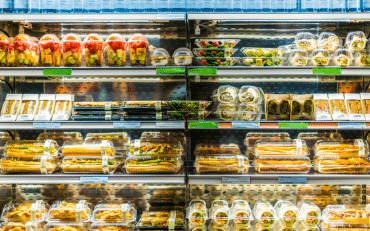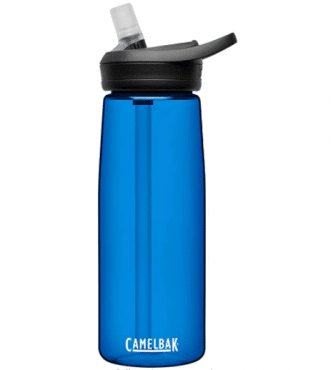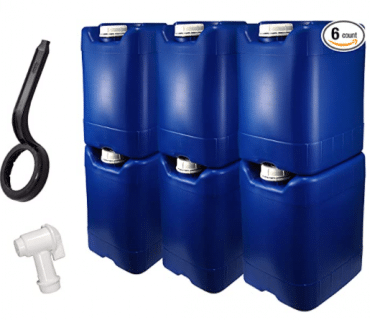Introduction
When you are well-prepared, your survival odds are increasing manifold, no matter what situation you have gotten into. But what does being prepared include? First of all, it is about survival skills. Second, it involves proper survival gear in a well-packed survival bag. Third of all is what you have managed to learn about surviving in particular situations. Last but not least, your survival chances go up high if you have weapons on you and the ability to use them. What matters the most is your knowledge that will help you sustain yourself and be mindful in your actions towards nature!
To the point
In just a few decades, plastic has managed to become the #1 most used material. Despite certain pollution-related concerns about the usage of this material, plastic is widely used in every field, from medicine to agriculture. In fact, most items we use in our day-to-day life are made of plastic. Have a look around, and you’ll notice that plastic objects surround you at all times. Your laptop is made of plastic, and so is your keyboard, and your kid’s toys, and your grocery bags, and the containers in your fridge that you store food in. Today we will be focusing on the latter. To be more precise, today’s topic is food-grade plastic.
What is Food Grade Plastic?
To put it simply, food-grade plastic is a safe plastic material used in food preparation, food storage, food processing, food packaging, etc. Your milk jugs, peanut butter jars, bread bags, plastic bottles, etc., are all made of food-grade plastics that the FDA has approved if you’re reading this from the US. Learn how to make stevia syrup and how to make sugar in our detailed reviews.
People oftentimes falsely believe that all plastic is the same, more or less. That is not correct: not all plastics are created equal. Although the chemical structure of different plastics is similar, plastics differ in aspects like durability, flexibility, and, what’s important for today, food safety. Food-grade plastic is safe enough to store food items. Get a decent mortar and pestle to process food and keep it in plastic containers.
Plastic containers made from unsafe plastic can leach bad chemicals for your health, contaminate food, and therefore cause intoxication. As a survivalist, you should know which plastic is or is not safe so that you can choose the right material for storing your emergency food supply.
In any case, knowing a thing or two about what’s good and what’s bad for your health will always come in handy.
Food Safe vs. Food Grade: Is There a Difference?
Although these two terms will be mostly used interchangeably for the rest of the article, let us define some of the differences between the two before we move any further.
Both terms are to do with food safety, and many people believe them to be essentially the same thing. So, is food grade the same thing as food safe?
Actually, not exactly. The term food safe is generally used to refer to a material rather than a finished product. If a certain material is deemed food-safe, it indicates that it does not contain any harmful substances and toxins and is therefore permitted to contact directly with food products. On the other hand, the term food-safe is oftentimes used to describe a product that will not intoxicate your food when used for its intended purpose. You can store even vinegar if you learn how to make vinegar at home. For an item to be considered food safe, it has to be made of food-grade materials, plus certain product-specific concerns must be considered.
This is, however, not the point of our article, so let’s just leave it at that. These terms are very similar, and the differences are not so important for this specific article, so let us move on now that we’ve (hopefully) cleared any misconceptions and misunderstandings regarding the terminology.
Safe or Dangerous: Who Can Decide?
There are certain laws passed in most countries regarding what is or isn’t safe. The U.S. Food and Drug Administration (FDA) decides whether material is food grade or not in the States. The same mission is carried out in Canada by the Canadian Food Inspection Agency (CFIA) and the Department of Health of Canada.
There are certain requirements that a plastic material must meet to be deemed food grade. We will not go into too much detail on these regulations. But, to put it shortly, to be considered food safe, a plastic material must fit these basic requirements:
- It must not contain toxic dyes;
- It must not contain recycled toxic plastic products unless said recycled product is specifically deemed as safe by the regulating agency;
- It must not contain any substances other than those allowed by the FDA or another regulating agency.
Types of Food-Grade Plastics

To determine whether the material is food grade, examine the Resin Identification Code. Several types of plastics are considered food-safe. Most of the plastics marked by the numbers from 1 to 7 are safe. However, there are some that you must use with caution.
Let’s break down some of the most common types of food-grade plastic materials to find out about their qualities and applications.
Firstly, we’re going to take a look at the plastics that are generally considered safe.
Code 1: Polyethylene Terephthalate (PET or PETE)
Polyethylene terephthalate (PET or PETE) is an FDA-approved food-grade plastic widely used for packaging soft drinks and water. Its recycling number is 1. PET is one of the most common household plastics. Soda bottles, jelly jars, salad dressing bottles, and peanut jars, for example, are generally made of this material. It is quite flexible, lightweight, and impact-resistant. However, note that heating it is unsafe. Another notable feature of PET resin is that it is fully recyclable. In fact, it is the most recycled type of plastic in the world!
Code 2: High-Density Polyethylene (HDPE)
High-density polyethylene (HDPE) is another FDA-approved type of plastic suitable for direct food contact. It is identifiable by the number 2 on the plastic packaging. Despite being durable and strong, it is fairly lightweight. In addition, HDPE is chemical resistant and can withstand quite high temperatures. As a result, HDPE is probably the most common household plastic.
Additionally, it resists corrosion pretty well. HDPE plastics are suitable for various uses: for example, HDPE is the material used for most juice and milk containers and plastic buckets.
Code 4: Low-Density Polyethylene (LDPE)
Low-density polyethylene (LDPE) is thinner than most other plastics, but that does not take away its toughness and impact resistance. This material is both flexible and reliable. Another notable quality of LDPE is its high-temperature resistance. Squeeze bottles and baked goods packaging, for example, are oftentimes made of LDPE. LDPE is suitable for both film and rigid applications.
Code 5: Polypropylene (PP)
Polypropylene, or PP, is among the safest food-grade plastics out there. This explains why it is one of the most commonly used ones, too. Its high melting point and notable heat resistance allow its usage in high temperatures, making it dishwasher-safe and microwave-safe. Reusable food storage containers are generally made of this material, and so are most single-serving tubs like yogurt, cream cheese, and butter containers.
Examples of food-safe plastic containers
Now that we’ve reviewed some types of generally safe food-grade plastics let’s move on to plastics that may not be so safe and must be used with caution.
Code 3: Polyvinyl Chloride (PVC)
Although PVC is FDA-approved and considered food grade, there are certain concerns regarding its safety. PVC is used in products like sandwich bags. This material must be used with caution, as it might potentially leach harmful chemicals. Don’t expose it to high temperatures. It is best to avoid using it near children.
Code 6: Polycarbonate (PC)
Polycarbonate is extremely durable yet lightweight. It can withstand heat and is impact-resistant. However, some people have voiced their concerns about a certain harmful component used in manufacturing this plastic: BPA. Despite that, polycarbonate has been approved by the FDA, is considered food grade and experts say that very low levels of BPA are acceptable and will not harm your health. In any case, it should be used with caution.
Safety Rules to Keep in Mind
Even if the material is food-grade, you still need to follow certain rules to ensure your safety. Follow the instructions:
- You need to pay attention to certain product-specific rules when using a food-grade plastic product.
- Check if the product is microwave-safe, dishwasher-safe, freezer-safe, etc.
- Find out if it’s suitable for long-term storage and if it can be reused or not.
- Check if it is suitable for storing all kinds of food including flour: it is best not to put acidic foods into some plastic containers.
- Only use the product for its intended purpose.
To Sum Up
Food-grade plastic is defined as plastic that does not leach toxic chemicals and can contact food without negative consequences. For example, plastic containers we used to store food in are all made of food-safe plastic. Food-grade plastic must meet certain requirements: it must not contain any toxic substances, dyes, etc. In addition, food-grade plastic must be approved by a regulating agency. In America, this mission is carried out by the FDA.
There are several types of food-grade plastic that differ in certain aspects like flexibility and durability. Some are considered safer than others. Food safe plastic is safe enough for food storage, food processing, food packaging, etc. You can identify a type of plastic by its identification code: a little recycling symbol with a number inside.
Frequently Asked Questions (FAQ)
What is food-grade plastic?
To put it simply, food-grade plastic is plastic that has been approved by the FDA or other regulating agencies and is safe for food contact.
What type of plastic is safe for food?
Generally, plastics from 1 to 7 are all considered safe enough to have close contact with food. That means they do not contain any toxins. However, certain nuances must be kept in mind. Always follow the instructions and use plastic products as intended.
What is the best food-grade plastic?
PET, HDPE, LDPE, and PP are among the safest and most common plastics. They are used in plastic bottles, plastic containers, jelly jars, milk boxes, and many other items.




